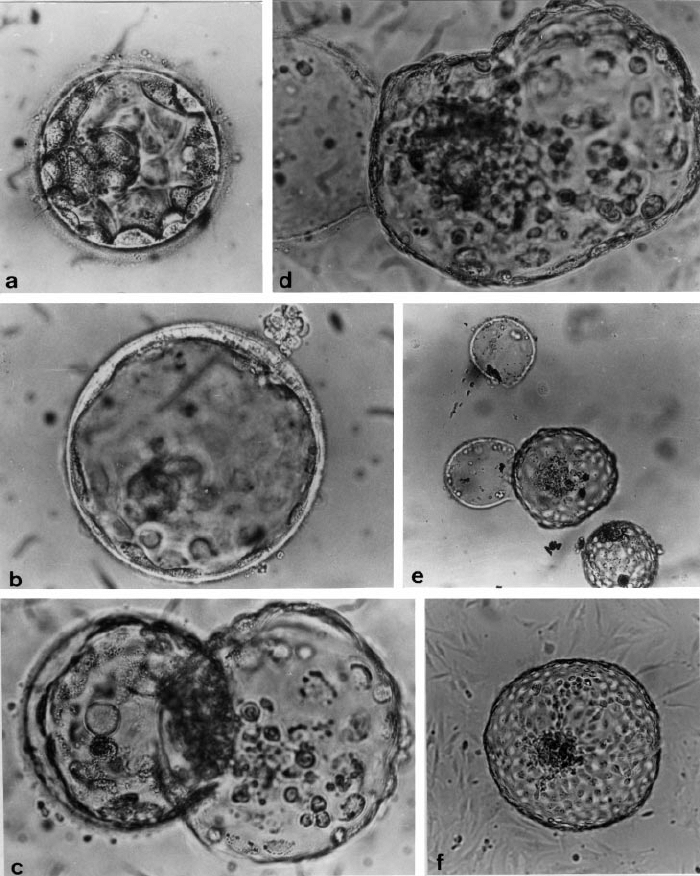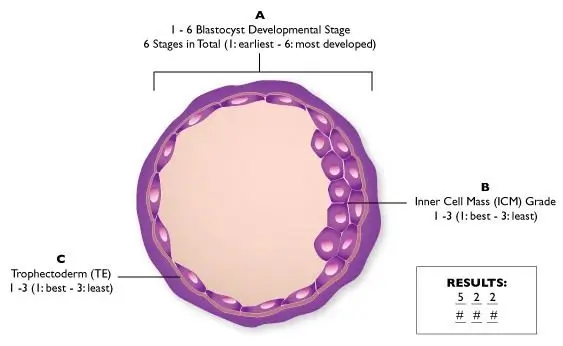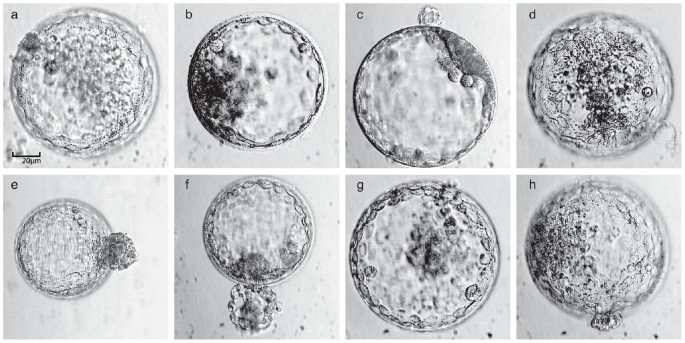Natural hatching in vitro in human blastocysts. ( a ) Cavitating
€ 21.50 · 4.8 (80) · Auf Lager

Download scientific diagram | Natural hatching in vitro in human blastocysts. ( a ) Cavitating blastocyst 114 h post insemination (day 5, a.m.). ( b ) Early hatching blastocyst 121 h post insemination (day 5, p.m.). ( c ) Late hatching blastocyst 138 h post insemination (day 6, a.m.). ( d ) Hatching almost completed 144 h post insemination (day 6, p.m.). ( e ) Two completely hatched blastocysts with empty zonae 145 h post insemination (day 6, pm). ( f ) Healthy hatched blastocyst with distinct inner cell mass (ICM), trophoectoderm (TE) and expanded blastocoel 147 h post insemination (day 6, p.m.). Original magnification: ( a – d , f ) ϭ ϫ 400; ( e ) ϭ ϫ 200. from publication: Blastocyst transfer after enzymatic treatment of the zona pellucida: Improving in-vitro fertilization and understanding implantation | It has been shown recently that delayed transfers improve implantation rates in assisted reproductive technology programmes. In a prospective study, the pregnancy rates and safety of outcome were evaluated in a group of patients after the transfer of day 5 blastocysts with | Blastocyst, Zona Pellucida and Pregnancy Rate | ResearchGate, the professional network for scientists.

Development of porcine embryos in vivo and in vitro; evidence for embryo 'cross talk' in vitro - ScienceDirect

Blastocyst quality affects the success of blastocyst-stage embryo transfer - ScienceDirect

Self-organization of the in vitro attached human embryo

Embryo Grading, Blastocyst Implantation, Blastocyst Grading

Natural hatching in vitro in human blastocysts. ( a ) Cavitating

Human Blastocyst Formation and Development

Prediction of human blastocyst development from morulas with delayed and/or incomplete compaction - ScienceDirect

Blastocyst quality affects the success of blastocyst-stage embryo transfer - ScienceDirect

Blastocyst quality affects the success of blastocyst-stage embryo transfer - ScienceDirect

Abnormal Early Cleavage Events Predict Early Embryo Demise: Sperm Oxidative Stress and Early Abnormal Cleavage

Frontiers Thinning or Opening: A Randomized Sibling-Embryo Pilot Trial on the Efficacy of Two Laser-Assisted Hatching Modes During the Extended Culture of Highly Fragmented Cleavage Embryos








